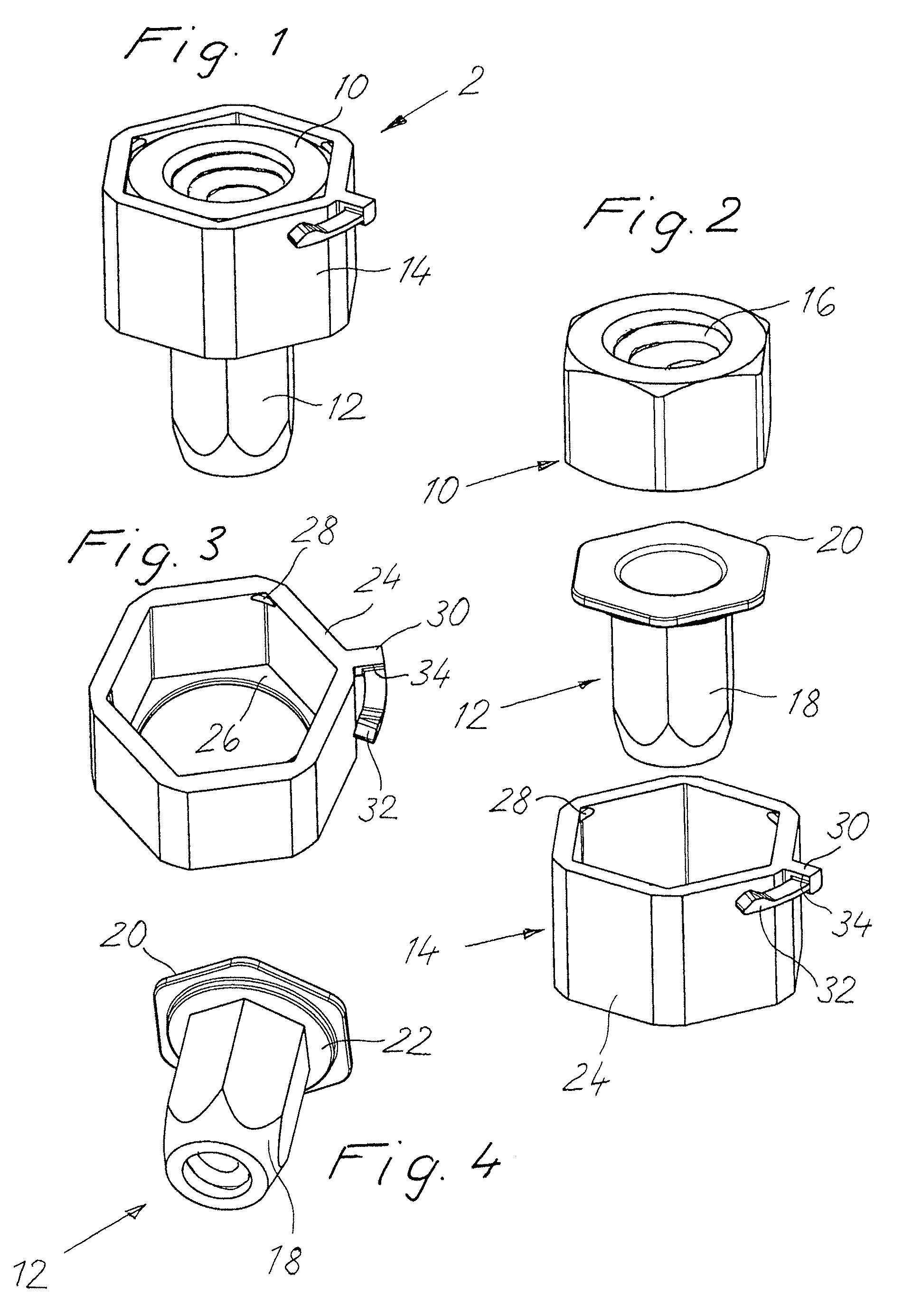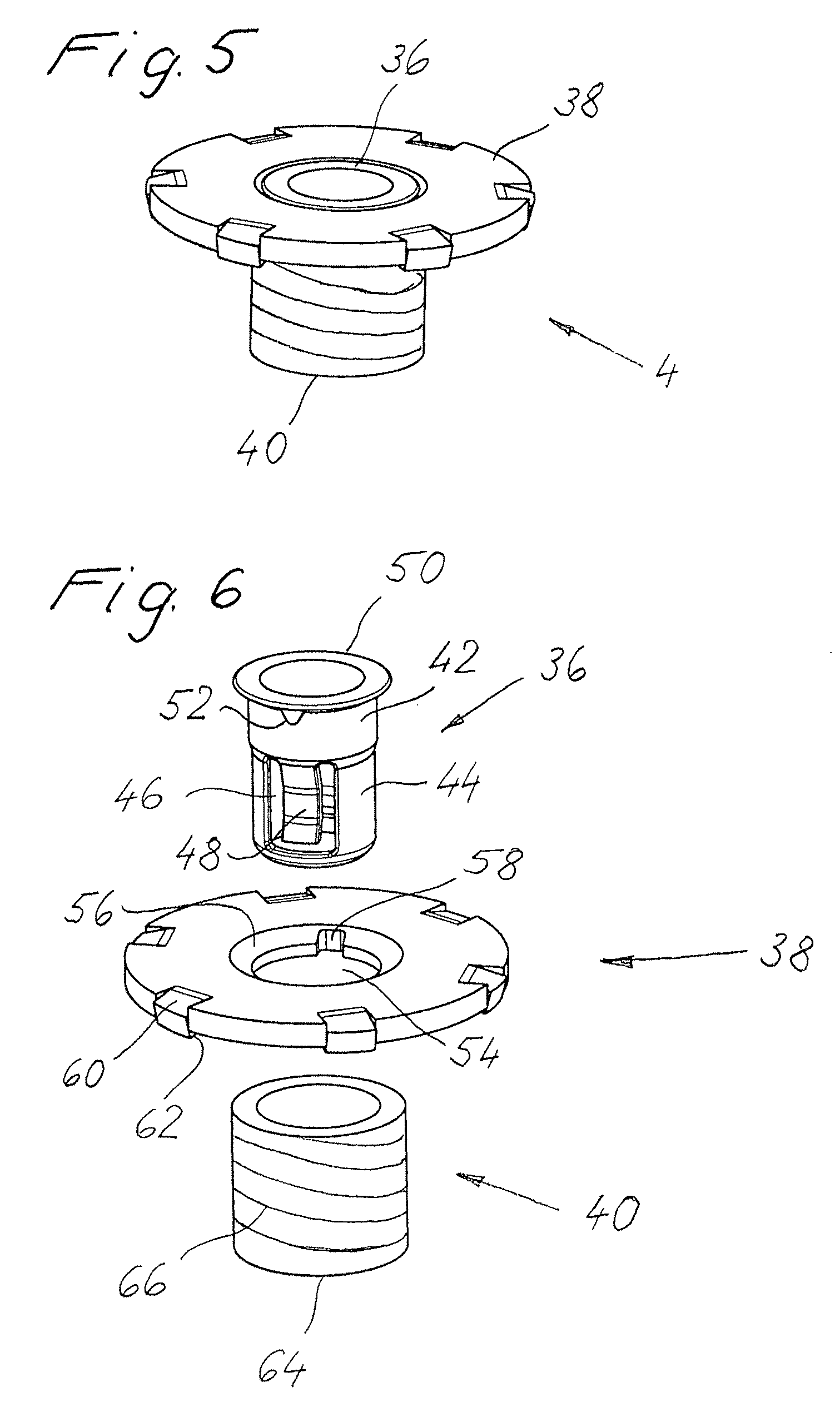Fastening device with tolerance compensation
a technology of tolerance compensation and fastening device, which is applied in the direction of washers, screws, couplings, etc., can solve the problems of blind rivets and relative cost, and achieve the effects of high connection strength, simple and easy production, and markedly more cost-effective production
- Summary
- Abstract
- Description
- Claims
- Application Information
AI Technical Summary
Benefits of technology
Problems solved by technology
Method used
Image
Examples
Embodiment Construction
[0022]The fastening device shown in FIGS. 8 and 9 serves to fasten a component B to a component A. The two components A, B have a spacing from one another, which may vary due to tolerances required by the assembly and / or production. The fastening device shown allows an automatic compensation of said tolerances as is described further in more detail.
[0023]The fastening device consists of a base unit 2 (FIGS. 1 to 4), an adjusting unit 4 (FIGS. 5, 6) and a fastening screw 8 (FIGS. 8, 9). The base unit 2 and the adjusting unit 4 may be combined to form an assembly unit 6, which is shown in FIG. 7.
[0024]To describe the base unit 2, reference is now made to FIGS. 1 to 4. The base unit 2 consists of a threaded adjusting nut 10, a blind rivet nut 12 and a retainer 14. The threaded adjusting nut 10 is a conventional hexagonal nut which is provided in the embodiment shown, however, with a left-hand internal thread 16.
[0025]The blind rivet nut 12 is a conventional blind rivet nut with a sleev...
PUM
 Login to View More
Login to View More Abstract
Description
Claims
Application Information
 Login to View More
Login to View More - R&D
- Intellectual Property
- Life Sciences
- Materials
- Tech Scout
- Unparalleled Data Quality
- Higher Quality Content
- 60% Fewer Hallucinations
Browse by: Latest US Patents, China's latest patents, Technical Efficacy Thesaurus, Application Domain, Technology Topic, Popular Technical Reports.
© 2025 PatSnap. All rights reserved.Legal|Privacy policy|Modern Slavery Act Transparency Statement|Sitemap|About US| Contact US: help@patsnap.com



